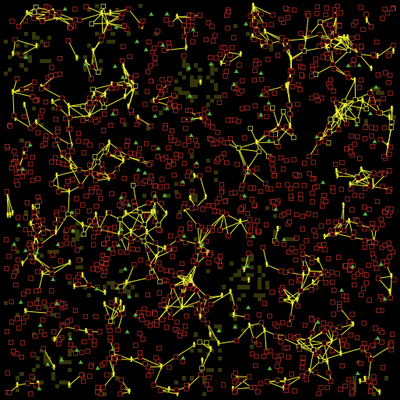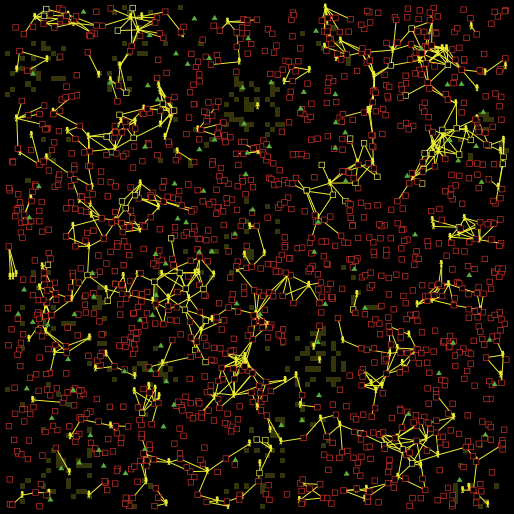The Internal Organizational Plasticity Model (IOP 2.1.2) (2.1.2)
IOP 2.1.2 is an agent-based simulation model designed to explore the relations between (1) employees, (2) tasks and (3) resources in an organizational setting. By comparing alternative cognitive strategies in the use of resources, employees face increasingly demanding waves of tasks that derive by challenges the organization face to adapt to a turbulent environment. The assumption tested by this model is that a successful organizational adaptation, called plastic, is necessarily tied to how employees handle pressure coming from existing and new tasks. By comparing alternative cognitive strategies, connected to ‘docility’ (Simon, 1993; Secchi, 2011) and ‘extended’ cognition (Clark, 2003, Secchi & Cowley, 2018), IOP 2.1.2 is an attempt to indicate which strategy is most suitable and under which scenario.

Release Notes
The model IOP 1.0.1 was first coded during December 2016 and January 2017. It then underwent a series of modifications starting August 2018, in preparation of the paper submission. An improved version IOP 2.0.0 was then created in August 2019 and version IOP 2.1.0 towards the end of that same month. October 2019 is the month when the version uploaded here had been released.
Associated Publications
Secchi, D. (forthcoming). Cognitive attunement in the face of organizational plasticity. Evidence-Based Human Resource Management.
The Internal Organizational Plasticity Model (IOP 2.1.2) 2.1.2
Submitted by
Davide Secchi
Published Jun 02, 2020
Last modified Jun 02, 2020
IOP 2.1.2 is an agent-based simulation model designed to explore the relations between (1) employees, (2) tasks and (3) resources in an organizational setting. By comparing alternative cognitive strategies in the use of resources, employees face increasingly demanding waves of tasks that derive by challenges the organization face to adapt to a turbulent environment. The assumption tested by this model is that a successful organizational adaptation, called plastic, is necessarily tied to how employees handle pressure coming from existing and new tasks. By comparing alternative cognitive strategies, connected to ‘docility’ (Simon, 1993; Secchi, 2011) and ‘extended’ cognition (Clark, 2003, Secchi & Cowley, 2018), IOP 2.1.2 is an attempt to indicate which strategy is most suitable and under which scenario.
Release Notes
The model IOP 1.0.1 was first coded during December 2016 and January 2017. It then underwent a series of modifications starting August 2018, in preparation of the paper submission. An improved version IOP 2.0.0 was then created in August 2019 and version IOP 2.1.0 towards the end of that same month. October 2019 is the month when the version uploaded here had been released.

